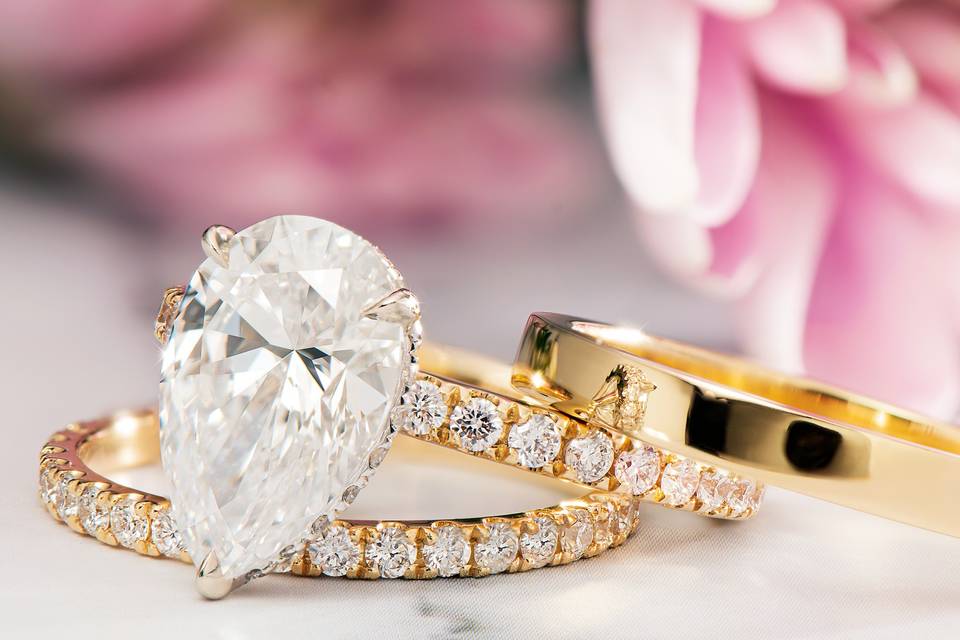Introduction to Lab Grown Diamonds
In recent years, lab grown diamonds have emerged as a compelling alternative to their natural counterparts. These diamonds, created through advanced technological processes, offer numerous benefits ranging from ethical considerations to environmental sustainability.
What are Lab Grown Diamonds?
Lab grown diamonds, also known as synthetic or cultured diamonds, are created in laboratories under controlled conditions that mimic the natural diamond formation process.
Key Differences from Natural Diamonds
While visually and chemically identical to natural diamonds, lab grown diamonds are produced in a matter of weeks rather than over millions of years underground.
Growing Popularity and Market Demand
The demand for lab grown diamond inititals is steadily increasing due to their ethical sourcing, sustainable nature, and competitive pricing compared to natural diamonds.
Benefits of Lab Grown Diamonds
The rise of lab grown diamonds can be attributed to several distinct advantages they offer over their natural counterparts.
Environmental Impact
Unlike traditional diamond mining, which can have significant environmental consequences, lab grown diamonds have a minimal ecological footprint.
Ethical Considerations
Lab grown diamonds are free from the ethical concerns associated with diamond mining, such as labor exploitation and conflict financing.
Cost Comparison with Natural Diamonds
One of the most appealing aspects of lab grown diamonds is their affordability relative to natural diamonds of similar size and quality.
How Lab Grown Diamonds Are Made
Understanding the process behind lab grown diamonds sheds light on their unique production methods.
The Process Explained
Two primary methods are used: High Pressure High Temperature (HPHT) and Chemical Vapor Deposition (CVD).
High Pressure High Temperature (HPHT) Method
In this method, carbon atoms are subjected to high pressure and temperature to crystallize into diamonds.
Chemical Vapor Deposition (CVD) Method
The CVD method involves a chemical reaction that deposits layers of carbon atoms onto a substrate, forming diamond crystals.
Quality and Characteristics of Lab Grown Diamonds
Despite their synthetic origin, lab grown diamonds exhibit high quality and desirable characteristics comparable to natural diamonds.
Clarity and Color Grading
Lab grown diamonds are graded using the same standards as natural diamonds, ensuring transparency and consistency in quality assessment.
Durability and Hardness
These diamonds possess the exceptional hardness and durability that diamonds are renowned for, making them suitable for various jewelry applications.
Certification and Standards
Reputable laboratories provide certification for lab grown diamonds, verifying their authenticity and quality.
Uses and Applications
The versatility of lab grown diamonds extends beyond traditional jewelry to encompass diverse industrial and consumer applications.
Jewelry Industry
Lab grown diamonds are increasingly embraced jewelers for their ethical appeal and creative possibilities in jewelry design.
Industrial Uses
Beyond adornment, these diamonds serve in industrial applications such as cutting tools and high-tech equipment due to their hardness and thermal conductivity.
Emerging Trends
A growing trend is the customization of lab created diamonds, allowing consumers to create personalized jewelry pieces that align with their preferences.
Misconceptions About Lab Grown Diamonds
Despite their advantages, lab grown diamonds face misconceptions that warrant clarification.
Quality Concerns
Some consumers question the durability and brilliance of lab grown diamonds compared to natural diamonds, though advancements in technology have largely addressed these concerns.
Value and Resale
The perception of resale value remains a point of contention, as lab grown diamonds are valued differently from natural diamonds in secondary markets.
Consumer Awareness
Educating consumers about the distinctions between lab grown and natural diamonds is crucial for informed purchasing decisions.
Comparison Between Lab Grown and Natural Diamonds
A comparative analysis reveals nuanced differences between lab grown and natural diamonds across various aspects.
Physical Properties
While chemically identical, differences in growth patterns can result in subtle distinctions in appearance between lab grown and natural diamonds.
Financial Considerations
The affordability of lab grown diamonds makes them an attractive option for budget-conscious consumers seeking diamond-like brilliance.
Cultural and Symbolic Value
Natural diamonds hold longstanding cultural significance, whereas lab grown diamonds appeal to those prioritizing sustainability and ethical sourcing.
Sustainability and Environmental Impact
The environmental credentials of lab grown diamonds are a significant factor in their increasing popularity.
Carbon Footprint
The carbon emissions associated with lab grown diamond production are considerably lower compared to the ecological footprint of diamond mining.
Ecological Benefits
By reducing the demand for mined diamonds, lab grown diamonds contribute positively to environmental conservation efforts.
Industry Perspective
The diamond industry is evolving towards greater sustainability, with lab grown diamonds playing a pivotal role in shaping its future trajectory.
Consumer Considerations When Buying Lab Grown Diamonds
Several factors influence consumer decisions when choosing lab grown diamonds over natural alternatives.
Factors to Evaluate
From price considerations to ethical implications, understanding these factors empowers consumers to make informed choices.
Price
Lab grown diamonds typically offer better value for money compared to natural diamonds of similar quality and size.
Source Transparency
Transparency in sourcing reassures consumers of the ethical and environmental credentials of lab grown diamonds.
Customization Options
The ability to customize jewelry designs using lab grown diamonds appeals to individuals seeking unique and personal expressions.
Future Outlook for Lab Grown Diamonds
The future prospects of lab grown diamonds point towards continued innovation and market expansion.
Technological Advancements
Ongoing advancements in diamond synthesis technologies promise enhanced quality and efficiency in lab grown diamond production.
Market Projections
Forecasts indicate a growing market share for lab grown diamonds as consumer awareness and acceptance continue to rise.
Challenges and Opportunities
Navigating regulatory frameworks and consumer perceptions presents both challenges and opportunities for the lab grown diamond industry.
Conclusion
In conclusion, lab grown diamonds represent a compelling choice for consumers seeking ethical, sustainable, and affordable alternatives to natural diamonds. With advancements in technology and increasing market acceptance, the future looks promising for these synthetic gems.


